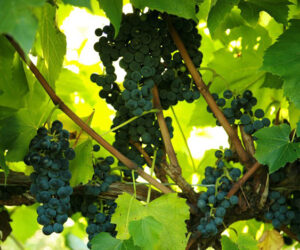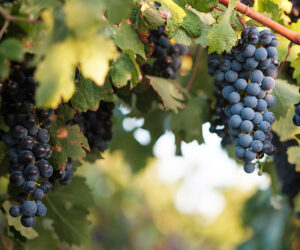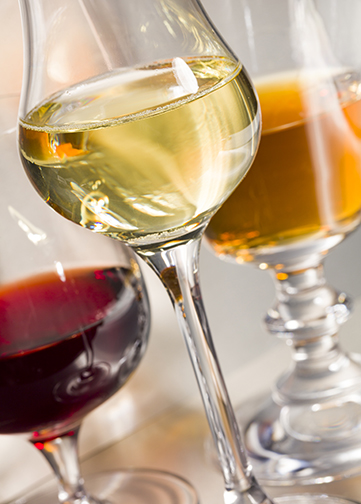 Sweet wines, dessert wines, “stickies” . . . whatever you want to call them, they can be among the most profound wines that exist. Ports, icewines, Botrytized wines like Sauternes or Trokenbeerenauslese, all reach levels of complexity that 99.9% of table wines cannot dream of. There are a larger percentage of sweet wines around the world that achieve the highest degree of complexity relative to table wines. There are, of course, oceans of mediocre, overly sweet, dessert wines out there as well!
Sweet wines, dessert wines, “stickies” . . . whatever you want to call them, they can be among the most profound wines that exist. Ports, icewines, Botrytized wines like Sauternes or Trokenbeerenauslese, all reach levels of complexity that 99.9% of table wines cannot dream of. There are a larger percentage of sweet wines around the world that achieve the highest degree of complexity relative to table wines. There are, of course, oceans of mediocre, overly sweet, dessert wines out there as well!
Sugar is a fantastic preservative. Tannin, color, and acid are what preserve dry table wines, but it is the power of sugar (and in some cases, high alcohol and acid levels) that allows sweet wines to age for so much longer than table wines, which can easily age for many decades, and occasionally over a century.
I’ve put together a trio of articles on the production of the most popular styles of dessert wines: Icewine, sweet Sherry, and Port. One drawback to dessert wines’ extreme ageability is that, for the same reasons they age so slowly and well, many sweet wines require a decade or more to be ready to drink. Personally, I’m happy to buy and age a bottle of wine for a few decades, but I’m much too impatient to wait so long to taste something I’ve made! So, within the articles, I make suggestions for production methods or choices that would lead to wines that will be ready to drink sooner than later.
It’s important to keep in mind when making any dessert wine that what makes a sweet wine a drinkable wine, and not a heavy, cloying wine, is acidity. The best sweet wines have high acid levels, which cut through the sugar and make for a lively wine. And a final point before we get into the dessert styles, just like a sparkling wine made outside of the Champagne region of France is not technically a “Champagne,” Port and Sherry can only be produced inside their respective regions, and wines produced outside these regions are considered Port-style and Sherry-style wines. Icewine, on the other hand, refers to the style of wine being produced, so can be made anywhere.
Icewine
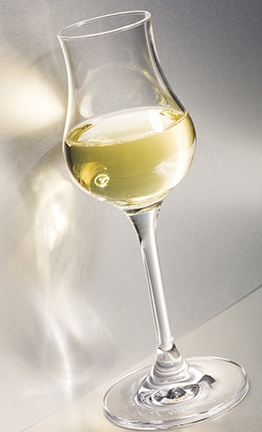 Icewine is, by nature, made in small production, highly labor intensive, very cold, and, because of all of this, very expensive. The wines are produced in small quantities, as you are freezing much of the water (and therefore volume) in the grapes before pressing them, getting only a fraction of the must you would with unfrozen grapes. Picking frozen grapes, or freezing them yourself, not to mention pressing frozen grapes, is a lot of work. Finally, it’s cold, just as you will be when picking and processing these wines!
Icewine is, by nature, made in small production, highly labor intensive, very cold, and, because of all of this, very expensive. The wines are produced in small quantities, as you are freezing much of the water (and therefore volume) in the grapes before pressing them, getting only a fraction of the must you would with unfrozen grapes. Picking frozen grapes, or freezing them yourself, not to mention pressing frozen grapes, is a lot of work. Finally, it’s cold, just as you will be when picking and processing these wines!
Very little wine comes from icewine grapes compared to grapes pressed for more traditional wine styles; but, if you’ve ever had the pleasure of drinking a good icewine, you know how mind bogglingly complex they can be. Though the freezing process concentrates sugar, leading to a very sweet wine, it also concentrates acid, which keeps the wines balanced and lively. Originally produced in Germany in the late 18th century, now eastern Canada and the eastern United States also produce significant quantities.
There are two ways to make icewine at home — “naturally,” if you’re living in a climate that usually freezes at the right time, or by actually freezing grapes or juice yourself. I make a point to say “at home,” because grapes must be frozen naturally for commercial icewine production. The Canadian Vintners Quality Alliance standards state that icewine must be produced exclusively from grapes that have been harvested, naturally frozen on the vine, and pressed in a continuous process while the air temperature is 17.6 °F (-8 °C) or lower, and that refrigeration at any point in the process prior to fermentation is forbidden. Since we don’t have to worry about those standards, let’s discuss the benefits and drawbacks of both of these at-home methods.
For a “naturally” frozen icewine, grapes are left outside for the early winter freezes in which the temperature drops to at least 20 °F (-7 °C). If growing the grapes yourself and letting nature do your freezing, choose a thick-skinned variety that ripens late. Thick skin “could be of value in the protecting of the fruit from splitting in rainy spells . . . and may limit invasion by saprophytic or parasitic microbes,” according to Ron Jackson’s Wine Science.Later ripening varieties will reach maturity closer to the first freezes, leaving less time for grapes to whither, rot, or become food for birds. Birds in particular can be a huge issue, so take care to protect your grapes from them. Popular varieties for icewine production are Riesling, Cabernet Franc, and Vidal Blanc, as well as Grüner Veltliner and Gewürztraminer.
A benefit to letting nature do the work is you do not need a large freezer, so you save money and space. However, it will involve picking grapes in the middle of a freezing night (they need to arrive at the winery and be pressed while frozen, of course!), which is surely no fun — being a California boy, unfamiliar with temperatures much below 40 °F (4 °C), I can only guess what it’s like!
When using a freezer to freeze your grapes or juice, you avoid the aforementioned risks or bone chilling nocturnal hardships involved with outdoor freezing, so thick skinned, late ripening grapes are not necessary. Unless you can set your freezer to 20 °F (-7 °C), be sure to let the grapes warm up to 20 °F (-7 °C) before pressing, or the berries will be even more solidified and difficult to press.
One benefit of mechanical freezing, which gives more stylistic freedom, is that you can select the point of maturity you want in your grapes prior to freezing. When grapes freeze in nature, they are generally very overripe and have overripe, fruity aromatics. Overripe grapes also have much lower acid levels, which come back into balance when pressing the frozen must out. So, if picking to freeze the grapes yourself, remember that earlier harvested grapes may have very different aromatics from naturally frozen wines, and, more critically, may have overly intense acidity.
The freezing process breaks down cell walls, whose contents leak into the pulp. When the water freezes inside your grapes, most of the good stuff (sugar, acid, aromas, and so on) will be in what little juice you press out. Press in a cold room (with the doors open, if you’re in a cold area, or even outside in the cold); if the grapes unfreeze while you are pressing them, all the water you are trying to exclude by keeping it frozen and locked into the grapes will flow right into your must, rendering all your hard work in vain.
Pressing will be slow and hard, as can be expected, relative to pressing soft, unfrozen grapes. “Juice yield is estimated to be 15% to 20% of what would have been from the same grapes at regular harvest time. The sugar concentration is typically so high (often above 35 °Brix) that fermentation occurs very slowly and stops prematurely . . . Inoculation with about 0.5 g/L active dry yeast is normally required to achieve the preferred 10% alcohol content,” according to Jackson. The minimum sugar level allowed in parts of Canada is 35 °Brix, and alcohol ranges of 7–12% are common.
Age your wine in a carboy or stainless tanks — small is good when so much work is involved: Where you typically need ~100 pounds (45 kg) of grapes to fill a 5-gallon (19-L) carboy with table wine, you will need ~500+ pounds (225 kg) to do the same with an icewine! Of course, fermentations and aging can be done in much smaller quantities. Once bottled, these wines have the acidity and sweetness to last decades, so your hard work can be appreciated for years to come.
If you want to save your strength from crushing frozen grapes, another way to make icewine is by starting with juice — be it juice you crushed yourself or purchased. Remember that the juice will expand once frozen, so don’t freeze it in a glass carboy! A bucket will work, but a PET carboy will make for extracting the juice easier. Once the juice is frozen solid you can begin to separate the ice from the highly concentrated juice. If you froze a PET carboy, then just turn that carboy upside down over a sanitized container and allow the juice to collect as the ice melts. Periodically check the Brix of the melted juice you collect with a refractometer. The Brix reading you should aim for will depend on the resulting wine you wish to make, but between 30–40 °Brix is a good range. The higher the Brix, the greater the residual sugar and alcohol potential. The more you allow the ice to melt the lower the Brix will become. Remember, that you will only be collecting a fraction of the juice you began with.
Another option that will save you even more time and effort is to make icewine from a kit. When you go this route, the effort of collecting concentrated juice is already done for you.These kits use concentrate, cold-processed from ripe grapes. Starting with a slightly lower gravity than icewine from traditional methods and then back-sweetening with a high-sugar juice addition after fermentation makes fermentation easier on the yeast, ensuring a complete ferment with rich, complex sweetness that icewine is known for.
Icewine kits come in 3-gallon (9.5-L) sizes — half that of traditional 6-gallon (23-L) kits. Common grape varieties for icewine kits include Vidal Blanc, Riesling, and Cabernet Franc. See the sidebar at the end of this article for available wine kits and to see which ones medaled in the 2018 WineMaker International Amateur Wine Competition.
Sweet Sherry
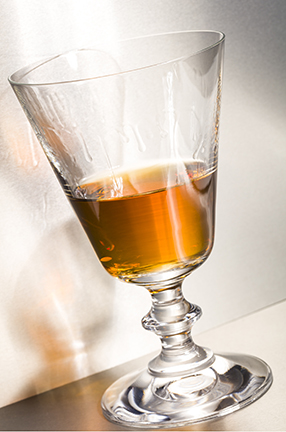 Hailing from the deep south of Spain in Andalucia, Sherries hold a special place in my heart — the original part of my business, Alexander Jules, and what I’m most known for, was barrel selecting and bottling Sherries. Proper Sherries are produced in the Marco de Jerez (in the cities of Jerez de la Frontera, Sanlúcar de Barrameda, and El Puerto de Santa Maria), and Sherry-style wines are produced in the nearby, and more inland, Montilla-Moriles DO. These are warm, dry areas, with Sanlúcar and El Puerto receiving some welcomed cooling influence from their adjacent rivers and the sea.
Hailing from the deep south of Spain in Andalucia, Sherries hold a special place in my heart — the original part of my business, Alexander Jules, and what I’m most known for, was barrel selecting and bottling Sherries. Proper Sherries are produced in the Marco de Jerez (in the cities of Jerez de la Frontera, Sanlúcar de Barrameda, and El Puerto de Santa Maria), and Sherry-style wines are produced in the nearby, and more inland, Montilla-Moriles DO. These are warm, dry areas, with Sanlúcar and El Puerto receiving some welcomed cooling influence from their adjacent rivers and the sea.
Although in the US we think of Sherry as strictly a sweet wine, the vast majority of quality Sherry is dry. We also often consider them as cheap cooking wines, but great Sherries easily rival the world’s “best” wines in complexity and quality. Sherries are also among the greatest food wines on earth (the dry styles being intended for the main meal, not dessert), pairing with everything from oysters to Chinese. They run the gamut from the driest wines on earth to the sweetest: Fino and Manzanilla Sherries are the driest, as they are aged under a unique surface yeast called flor, which consumes normally unfermentable sugars, and Pedro Ximenez (PX) are among the sweetest, upwards of 550 g/L of sugar content!
Here, of course, we’re focusing on dessert wines, so we’ll be talking about the production of Pedro Ximenez, although any grape can be used in its place, and there are a variety of wines produced in similar styles around the world. Owing to their high degree of sugar, these wines are often aged for decades before being bottled. I will explain the standard production method, but also a modern take on sweet Sherry, which needn’t age long.
One of the defining characteristics of Pedro Ximenez Sherry is that the grapes are sun dried prior to fermentation. Grapes are picked at typical sugar and acid levels (i.e., not overripe). They are then placed on straw mats in the sun for 15–20 days to evaporate water and concentrate sugars and acids. The grapes need to be in ideal conditions (read: Dry) to avoid rot. If doing this at home, be sure they are in a dry, well-ventilated area and do not accumulate significant dew overnight.
At 500 to 550 g/L (42–45 °Brix), the grapes are pressed. Yeast are a bit overwhelmed by sugar concentration at table wine levels of 21–26 °Brix (228–288 g/L), so you might imagine they’ll have a difficult time at these levels, and your must may or may not ferment at all! Thus, fortification to 15–18.5% ABV is quickly carried out.
All styles of Sherries are aged in very used (10+ years old) American oak barrels, although any neutral barrel will do. In the Marco de Jerez, the barrels are never full, around 20% headspace is left, so the wine is in constant contact with oxygen. The wine is safe from spoilage with so much sugar and the Jerezano fortification level of around 18%. These wines eventually turn a dark brown, and with age (20–50 years) nearly black! In Montilla-Moriles, they often fortify less and fill the barrels entirely. The Montilla wines age slower and retain more freshness vs. their Jerezano counterparts.
Having so much sugar, these wines can be a bit overwhelming, picking with a higher degree of acidity (or adding a bit in) will cut some of the sweetness and lighten up the mouthfeel as well.
Also as a result of having so much sugar, these wines age very slowly. Aging in the Jerezano fashion (higher alcohol and leaving headspace) will accelerate oxidation and aging. If you do choose to age in this way — with 20% empty headspace, and thus 6 or more inches (15+ cm) to the top of the wine — keep in mind it will be more difficult to access the wine through the bung, and an especially long wine thief may be needed. Traditionally, venencias and cañas are used to reach the wine, which are essentially a steel or bamboo cup with a thin, 3-foot (91-cm) long handle, used to dip into the wine. These are ideal, but will likely need to be ordered directly from Spain. A barrel with a spigot is another option, but will be difficult to buy used, and I would not recommend using new wood on a wine that will spend so long in barrel.
Cream Sherry is an intermediate style of Oloroso Sherry blended with PX to between 45 and 115 g/L sugar. Oloroso is a dry Sherry that can be made by fortifying a white wine (always Palomino in Jerez) to 17.5% ABV, and aging it in the same fashion as PX (neutral barrel, 20% head space). Blending between the two can be done at any point in time, and the wines can age together in barrel if you desire. An Oloroso would need a minimum of 3–5 years aging before the earliest point of readiness to drink.
A benefit of such stable wines — especially one so sweet you’ll want to drink in small doses — is that you can keep a barrel in your cellar and draw a bit out for a glass as often as you like, not needing to be concerned about topping. This way, you can watch the wine age over the years (or decades), to follow its development. PX is not just limited to the glass: Although I initially thought it sacrilegious to do so, I learned that a good PX poured on top of ice cream is one of the delights of life!
A friend named Ramiro Ibañez, one of the geniuses of the Sherry Triangle, makes a younger-drinking sweet wine that is ready much faster. A modern take on the old tradition. He makes it with Palomino grapes, but this will work with any grape — aromatic grapes (Vidal Blanc, Sauvignon Blanc, Moscatel, and so on, come to mind, although Palomino is relatively neutral). He picks around 24 °Brix, then sun dries for around 6 days until the grapes concentrate to 36 °Brix. Fermentation with such sweetness will likely only produce around 5% alcohol, and you can always stop with SO2 if it goes past your desired level. Age for 6 months to a year in carboys or stainless. You’ll have a fun, low-alcohol wine with fresh acidity, and many of the same characteristics as a traditional Sherry that doesn’t require long aging or oxidation.
Even faster still is making a Sherry from a wine kit. Sherry-style wine kits are not as common as icewine or Port-style, however manufacturers do make both dry and sweet (cream Sherry-style) as limited releases. These kits will be sold in 3-gallon (9.5-L) volumes with starting gravities at 1.100 or higher. With gravities this high, it’s important to follow the directions exactly and add just the right amount of water (you’ll be adding less than a gallon/4 L of water, and being shy by just a couple of cups can make the difference between a healthy fermentation and a stuck one. Fermentation should be done warm — in the mid-to upper-70s °F (24–25 °C) to help the yeast do their job of converting sugars to alcohol. A sweetener pouch is included with sweet Sherry-style kits and should be added after fermentation is complete.
Port
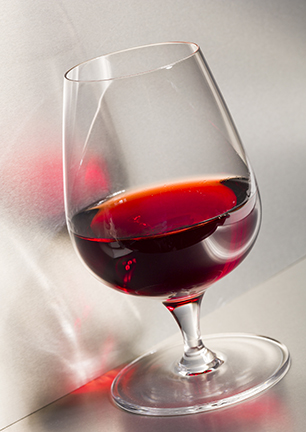 Although wine has been produced in Portugal for thousands of years, Port (or, in Portuguese, “Oporto,” named after the port city they ship from) in its current myriad of styles, has only existed for a few hundred years. It is a sweet, fortified wine. Both the sweetness and fortification came into fashion once it was noted that sweet and fortified wines not only retained freshness longer, but held up better during their voyage to England (Port’s primary consumer) and remained sound longer after arrival.
Although wine has been produced in Portugal for thousands of years, Port (or, in Portuguese, “Oporto,” named after the port city they ship from) in its current myriad of styles, has only existed for a few hundred years. It is a sweet, fortified wine. Both the sweetness and fortification came into fashion once it was noted that sweet and fortified wines not only retained freshness longer, but held up better during their voyage to England (Port’s primary consumer) and remained sound longer after arrival.
There are many styles of Port, but, in a nutshell, all are wines in which fermentation is stopped before dryness with the addition of neutral brandy, thus, sweet, fortified wine. The traditional styles are Ruby, Tawny, “LBV” (Late Bottled Vintage), and Vintage (although there are many other styles beyond these). Ruby Port is usually aged 2 to 3 years, either in stainless or larger format casks (to minimize oxygen exposure). It is the lightest and fruitiest style, and ready to drink young. Vintage Port is also aged only two years in cask before bottling, but is a much more structured wine made only in the best years. It takes at least a decade of bottle aging before being ready to drink. LBV and Tawny Ports are aged in cask for longer periods (4–6 years for LBV, 10–40+ years for Tawny). LBVs are single-vintage wines, Tawnies are blends of different vintages, done to maintain a house style. Both LBV and Tawny are ready to drink upon bottling.
Traditional Port is produced from nearly 50 grape varieties indigenous to Portugal (many of which are also used in Portugal and Spain for table wine production). The main grapes used in Port are Tinta Francisca, Touriga Nacional, Tinta Amarela, Tinto Cão, and Mourisco. In California these grapes can be found with a little searching (I’m aware of plantings of a few in Paso Robles, Lodi, Napa, and the Sierra Foothills AVA). That said, any grape variety can be used to create a Port-style wine. As fermentations are short, usually 2 to 3 days, thick-skinned grapes are preferred to give as much structure as possible in this short period.
The basic process of making a Port-style wine, regardless of which style you choose to make, is essentially the same: Begin your fermentation as you would for a table wine, and, at the desired level of sweetness, add neutral brandy (although any spirit would work) to halt fermentation, then age. The fortification creates an environment that yeast cannot survive in, so your residual sugar is safe from future fermentation.
Crushing is traditionally done by foot and followed by a short maceration. Port houses have lots of fermentations from which to select wines destined for their different styles. If aiming for a younger-drinking style, you may want to give a gentler extraction (fewer punch downs) or select a less structured grape.
When the fermentation has reached the desired sweetness level, the free run juice is racked out of the fermentation and fortified. The press run wine is added back to the fortified wine pressing. White and rosé Ports also exist, for which you would press your grapes (assuming you want a direct to press rosé), start fermentation, and halt fermentation at the same point you would with a red version by fortification.
In making a Port-style, we must decide how sweet we want our finished wine to be (grams per liter of residual sugar) as well as calculating how much brandy to add to reach a desired alcohol level. I spoke with Jorge Alves, a Portuguese enologist that works in Quinta do Tedo in the Douro, who informed me that most Ports have a residual sugar of 85 to 110 g/L, alcohol levels of 19–22%, and pH’s of 3.6–3.8.
Port houses generally use brandies for fortification between 70 and 77% ABV (alcohol by volume). You want something very neutral and pure — the idea is fortifying, not flavoring. Everclear (if legal in your state), high-ABV vodka, etc, is ideal. If using lower percent spirits, use something of high quality — as the larger quantity you will have to add, relative to higher ABV spirits, will have a larger effect on quality. Also, note that using lower ABV spirits will also add more water to your wine than higher proof, diluting it to an extent. If you can’t find any locally, high-ABV brandy (85% ABV and up) can be ordered from Wine Secrets, however, as it is considered a “hazardous material,” shipping is expensive.
For calculating how much alcohol to add, the general rule for 77% ABV brandy is 1 part brandy to 3.78 parts wine. Winebusiness.com has a calculator that can calculate for any strength of alcohol (https://www.winebusiness.com/tools/?go=winemaking.calc&sid=7).
I would encourage you to make a Ruby or LBV Port, as these will be ready to drink the soonest. For a Ruby, age your wine in glass or stainless for 2– 3 years and bottle. For LBV, age your wine for 4–6 years in a neutral cask (traditional Port is only made in neutral casks, never new). One reason I suggest the LBV is that, if you reserve a good dollop of topping wine, it wouldn’t hurt to bottle some of your wine over the years as it ages from time to time and then topping up.
Tawnies are technically blends of various vintages, so would require stocks of long-aged wines, and the blends are typically made from wines over 10 years of age. Vintage Ports, being so structured, require such long aging before drinking. Thus both are potentially less desirable styles for making at home, but if you have the patience and skill, can be very rewarding.
Given the years required to make a Port-style wine from grapes, going the wine kit route is another appealing option. These 3-gallon (9.5-L) kits are ready to consume as soon as they get over bottle shock — about a month after bottling. However, they also develop with age, and can be cellared for years. And it’s not just traditional Port-style wines available in kits either — chocolate, caramel, and other specialty Port-style wines are also available from kit manufacturers. Following the instructions on these kits results in tasty wines, but many experienced kit winemakers will put their own twist on them by fortifying with brandy or other spirits, with the extra alcohol acting as a flavor carrier, changing the taste and the mouthfeel.
Dessert Wine Kits (sidebar)
An easier — and significantly quicker — way to make any of these styles of dessert wine is to turn to wine kits. These allow for tasty wines from start to finish in under a year, yet still have the ability to be aged for years if you prefer to allow the flavors to develop in the cellar.
Dessert-style wine kits are some of the most popular and highest scoring kits entries in the WineMaker International Amateur Wine Competition year after year. Many earn gold medals and, in fact, the majority of medal-winning dessert wines are made from kits. Below is a list of icewine and Port-style wine kits available from retailers as of January 2019, as well as an indication of how it fared in the 2018 WineMaker competition. It is worth mentioning that kit companies often cycle different dessert flavors in and out, so some of these kits may not have been entered into last year’s competition, and some kits that did medal last year are no longer available.
Icewine
RJS Craft Winemaking Cru Specialty Riesling Style Dessert Wine (Gold)
RJS Craft Winemaking Cru Specialty Vidal Style Dessert Wine (Gold)
Winexpert Après Cabernet Franc Icewine Style (Bronze)
Winexpert Après Riesling Icewine Style (Gold)
Port-style*
Mosti Mondiale La Bodega (Bronze)
RJS Craft Winemaking Cru Specialty Black Forest Dessert Wine (Gold)
RJS Craft Winemaking Cru Specialty Cabernet Franc Style Dessert Wine
RJS Craft Winemaking Cru Specialty Coffee Dessert Wine (Silver)
RJS Craft Winemaking Cru Specialty Crème Brûlée Dessert Wine
RJS Craft Winemaking Cru Specialty Premium Dessert Wine
RJS Craft Winemaking Cru Specialty Raspberry Mocha Dessert Wine (Gold)
RJS Craft Winemaking Cru Specialty Toasted Caramel Dessert Wine (Gold)
Winexpert Après Dessert Wine
* While many of these flavored dessert wines are far from traditional Ports, they do fit into the Port-style wine category based on flavor and overall characteristics.


